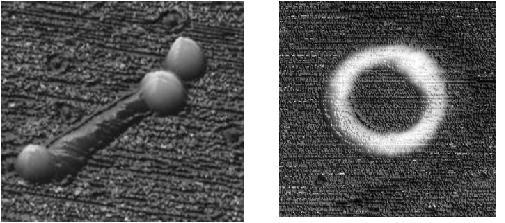73f Antenna Chemistry with Metallic Single-Walled Carbon Nanotubes
Single-Wall Carbon Nanotubes (SWNTs) have remarkable mechanical and electrical properties [1]. Individual metallic SWNT are ballistic conductors with conductivity that support high DC current densities [2]. As a consequence, metallic SWNT have a high axial dielectric constant [3], and rapidly polarize in response to externally applied electric fields. Therefore, metallic SWNT can be considered nano-scale antennae, while their high aspect ratio , ~ 1000, provides a localized apparent field amplification factor, β, at their tips. SWNT networks have been shown to efficiently absorb and thermalize electromagnetic radiation generally across the RF [4], microwave (MW) [5] and optical [6] frequency regimes. We demonstrate that these electrodynamic effects can be exploited under electromagnetic radiation to drive electrochemical reactions with aqueous suspensions of individualized nanotubes. Experimental results provide evidence of selective activation of metallic SWNT. In the presence of high oxidation potential transition metal salts to reduce metallic nanoparticles at the ends of SWNT, yielding novel composite nanostructures that encompass dumbbells and rings. Nanotube antenna chemistry could impact nanomedicine, energy harvesting and synthesis. 1. Saito, R., M. Fujita, et al., Applied Physics Letters, 1992. 60(18): p. 2204-2206. 2. McEuen, P.L., M.S. Fuhrer, et al., IEEE Transactions on Nanotechnology, 2002. 1(1): p. 78-85. 3. Benedict, L.X., S.G. Louie, et al., Physical Review B, 1995. 52(11): p. 8541-8549. 4. Gannon, C.J., P. Cherukuri, et al., Cancer, Published online 24 October, 2007. 5. Imholt, T.J., C.A. Dyke, et al., Chemistry of Materials, 2003. 15(21): p. 3969-3970. 6. Ajayan, P.M., M. Terrones, et al., Science, 2002. 296(5568): p. 705-705.
